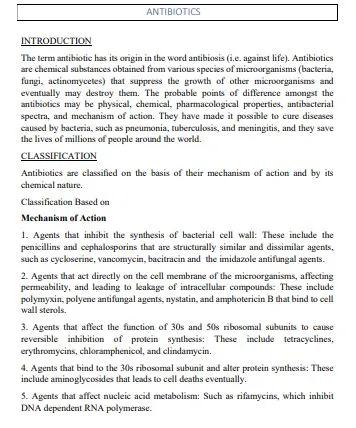‘Bhopal Gas Tragedy Assignment’ PDF Quick download link is given at the bottom of this article. You can see the PDF demo, size of the PDF, page numbers, and direct download Free PDF of ‘Bhopal Gas Tragedy Assignment’ using the download button.
Case Study For Bhopal Gas Tragedy Assignment PDF Free Download

Case Study of Bhopal gas tragedy
Introduction
The industrial catastrophe that occurred on the midnight of December 2, 1984 at Union Carbide India Limited pesticide plant in Bhopal, India was the worst industrial accident in the world.
The official count was around 3000 deaths, but unofficial estimates are around 8000 – 10000 deaths (Bogart, 1989).
Since then, a report in NY Times indicates the death toll has reached a high of 14,410 due to the chronic diseases caused by the gas leakage (NYT, 08/02/2002).
This is a complex case, involving critics from all sides accusing the Government of India, U.S. Government, and Union Carbide and the workers that handle the case.
The purpose of examining this case for this class, about Environmental Law is due to the fact that this involves a large-scale environmental pollution accident and the legal difficulties in international prosecution laws, extradition treaties and non-uniform regulations across countries which could be exploited by companies.
This paper, as the title suggests examines the social, environmental, legal and economic aspects of this evolving tragedy.
History of the Accident
However tragic the circumstances turned out to be, the opening of the pesticide plant in Bhopal was well meant.
The period was before Green Revolution. India was plagued with periodic droughts which resulted in famine.
After centuries of British rule and mismanaged kingdoms before that, India was reduced to poverty level subsistence existence for 75% of its citizens.
After partition there were two droughts and subsequent famines in the Northeastern part of India.
This brought the world’s attention to this region. Several research projects later, drought resistant varieties of wheat originally from the Sonora region of Mexico was developed to adapt to Indian conditions This wheat variety had bigger inflorescence, were resistant to rain and wind.
This however required higher fertilizer application and had higher pesticide requirement.
The Government of India began approving pesticide factories all over India, and thus the pesticide factory in India was opened in Bhopal, Madhya Pradesh in 1969 (Morehouse and Subramaniam, 1986).
This plant produced the pesticide carbaryl, also called as Sevin (Kurzman, 1987).
The first intermediate product in this process was phosgene, which was produced from the reaction of carbon monoxide with chlorine.
Phosgene in turn reacted with monomethylamine to produce methyl iscyanate (MIC), the deadly gas that was reason for the Bhopal tragedy.
MIC was reacted with alpha-naphthol to produce carbaryl.
MIC is highly combustible therefore it was kept under a blanket of nitrogen in two storage tanks in the Bhopal plant.
This storage location on site of the factory was illadvised since the factory was located among densely populated areas (Morehouse and Subramaniam, 1986).
This location was rejected by the municipality authorities of Bhopal, but then the Central Government gave approval.
By the malfunctioning of the valve, on the night of December 2nd, 1984, water got into the storage tanks, and reacted with nitrogen and thus the blanket gone, MIC leaked out.
Within 2 hours the storage tank was empty. The reaction was catastrophic.
The gas leaked over the city, carried by the wind into the shantytowns where squatters were living, into residential areas where working people and wealthy were living, to the railway station, where at least 200 people were found dead lying on the platforms.
The wind carried the cloud to a vast area of almost 40 sq km.
The next morning, several thousands were discovered lying dead on the streets of Bhopal, with post mortems revealing highly necroses lungs, and filled with fluid and in some cases holes appeared in the lungs due to the reaction with MIC (Morehouse and Subramaniam, 1986).
The side effects continue even today (Greenpeace International, 2002). To date, they claim 20,000 have died and 150,000 are chronically ill and clean up efforts are not up to date.
“….Communities around Bhopal drinking water is still contaminated.
Women are having gynecological problems and are giving birth to babies that have birth defects.
Eighteen years later, the plant location, which was subsequently abandoned, still has stockpiles of hazardous wastes and obsolete chemicals.”
India Today, in its February 15th, 1985 issue writes, “….the dead may not have been so unlucky after all.
Their end came horribly; it is true, choking on air that had suddenly gone vile. But at least the nightmare was brief.
And then it was over.
For those who survived the poisonous methyl isocyanite leak from the Union Carbide plant, release will not come so quickly.
Thousands of seriously affected survivors have suffered such extensive lung damage, that they no longer can apply themselves physically.
Their vision often gets blurred, spells of dizziness overtake them and walking briskly even for a few minutes sends them gasping to their knees, their chests aching.
There are women who have peculiar gynecological problems.
And there are others— particularly children—who keep reliving those hours over and over again.”
In the few years preceding the tragedy, the Union Carbide India Limited (UCIL) was losing money.
During that period, safety and maintenance were given lowest priority in an effort to turn the plant around.
In October 1982, there was an incident in which a mixture of MIC, chloroform and hydrochloric acid escaped from the plant (www.geocities.com/Athens/Forum/8266/Bhopal-2.htm), but in spite of the insistence of carbide officials for safety precautions, none were taken.
Between one third of engineers and trained specialists who were at the plant since its inception, left for better jobs elsewhere before the accident.
| Language | English |
| No. of Pages | 18 |
| PDF Size | 2 MB |
| Category | Government |
| Source/Credits | core.ac.uk |
Case Study For Bhopal Gas Tragedy Assignment PDF Free Download
